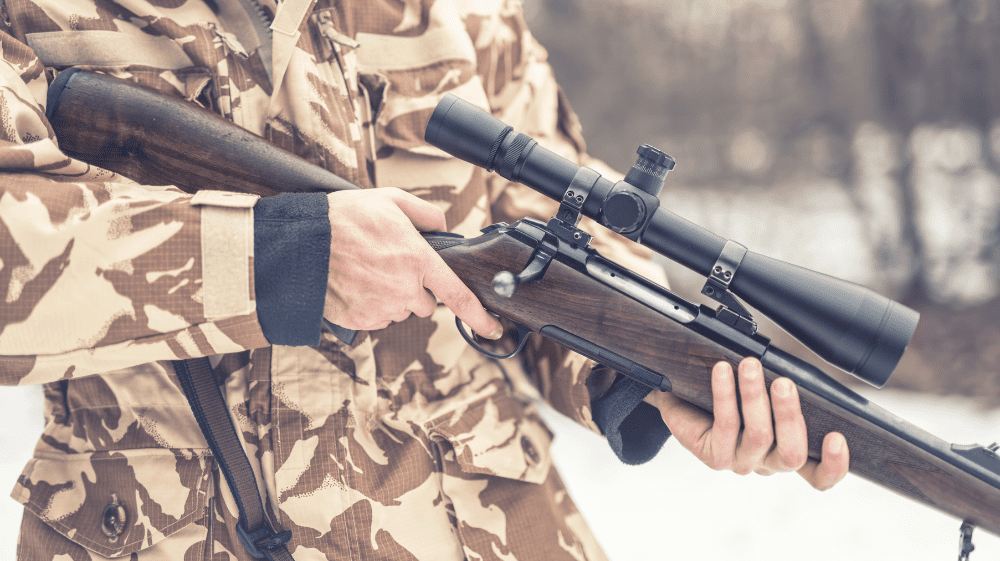In the world of precision shooting, two acronyms often spark debate among enthusiasts and professionals alike: MOA and MIL. These terms, representing Minute of Angle and Milliradian respectively, are more than just jargon; they are foundational to how shooters understand, measure, and interact with their environment. This article delves into the nuances of MOA and MIL, unraveling their history, functionality, and practical applications. Whether you're fine-tuning a rifle for long-range accuracy or honing your skills at the range, understanding the distinctions between MOA and MIL is crucial. Join us as we explore each system's intricacies and guide you in choosing the one that aligns best with your shooting style and needs.
(Reading Time: 3-6 Minutes)
Introduction to MOA and MIL Optic Measurement Systems
On rifle scopes with adjustment knobs and reticles with hashmarks or dots, you’ll notice measurements labeled either MOA (Minute of Angle) or MIL. These denote the two predominant measurement methods used both for manually adjusting windage/elevation on turrets as well as for ranging calculations on reticles. Understanding the background, relative precision, and use cases of MOA versus MIL helps ensure you select a rifle scope matched to your purposes and preferred system. Whether dialing for distance, determining holdovers, or ranging targets, your optics measurement system forms the backbone of crucial shooting calculations.
MOA Measurement System Explained

The Minute of Angle system dates back centuries aligning to basic geometry and circles. At its simplest conceptual level:
1 MOA equals approximately 1 inch per 100 yards distance.
Each MOA click on adjustment knobs shifts point of impact 1” at 100 yards, 2” at 200 yards and so on.
MOA is an intuitive analog for shooters to understand as it aligns evenly with distance/drop.
The imperial and fractional nature along with strong correlation to inch measurements have made MOA highly popular, especially with American marksmen and hunters.
MIL Measurement System Overview
 (Image from Leupold)
(Image from Leupold)
1 MIL closely corresponds to 3.6 inches per 100 yards, or 10cm per 100m.
MIL specifications are metric based originating from tactical requirements.
MIL alignments using factors of 10 simplify arithmetic such as determining meters or calculating bullet drops.
Thanks to military provenance and the decimal friendly nature allowing simpler computations, the MIL system has been widely adopted by international forces and is commonly used by shooters globally.
Supplementary Knowledge: 3rd Unit of Measurement - MRAD
MRAD, synonymous with MIL and short for Milliradian, is a unit of angular measurement utilized in shooting and optics. It's crucial to understand that MRAD and MIL are essentially the same. While the term MRAD is commonly used in Europe and other regions outside the US, MIL is the preferred terminology within the US. Regardless of the term used, both refer to the identical unit of measurement, integral to precision shooting and optical calibration.
MOA vs. MIL - Comparing Relative Precision
In terms of measurement and adjustment capability:
1 MOA translates to approximately 1 inch per 100 yards
1 MIL translates to 3.6 inches per 100 yards or 10cm per 100m
So each individual MIL measurement equates to a greater real-world shift than a single MOA unit. In other words, MOA specifications allow more granular precision dialing in adjustments and ranging calculations compared to the coarser but computationally simpler MIL system.
Converting MOA and MIL Measurements
If ever needing to cross-calculate or combine equipment involving differing units, you can convert between MOA and MIL using simplifying rules of thumb:
1 MIL approximately equals 3.6 MOA
1 MOA approximately equals 0.28 MIL
So for example:
15 MOA x 0.28 = 4.2 MIL
6.5 MIL x 3.6 = 23 MOA
Using these approximated constants allows reasonable accuracy when translating between the measurement systems such as when dialing a 3.5 MIL reticle holdover using a rifle scope with MOA adjustments.
While matching your complete optics and accessories within a single universal MOA or MIL system proves ideal, the above conversion tips help bridge any essential mathematical gaps that arise in mixed equipment scenarios.
Matching Optics Measurement System to Anticipated Use
When selecting rifle scopes for varying applications, consider measurement systems in your decision: For longer range and tactical shooting where complex calculations come into play, the MIL system provides advantages by simplifying the math. For mid to short range uses where mental calculations are less crucial, MOA often feels more intuitive for hunters and hobbyists while still maintaining greater precision per click.
The actual trajectory arc your ammunition produces can also influence selections with certain bullet ballistics aligning better to one system over the other. Additionally, matching the measurement system on both turrets and reticle prevents unnecessary conversions. So factor your specific applications when choosing between MOA and MIL optics.
Rifle Scope Reticles Using MOA and MIL
Many specialized reticles utilize or combine elements from the varying measurement scales:
BDC (bullet drop compensator) reticles with DOWNWARD pointing hashes will display adjustment markings in either MOA or MIL depending on the system.
FFP (first focal plane) reticles maintain subtension sizing through magnification changes so will need proper system matching.
Side focus parallax adjustment knobs may also show numbering in MOA/MIL depending on system.
So matching system conventions across all components prevents confusion and simplifies understanding.
Conclusion
When outfitting a new rifle, choosing optics involves more than just magnification power and objective lens size. The intricate measurements that make both manual adjustments and ranged calculations possible rely on either MOA or MIL - two predominant but very different measurement systems. Factoring in your shooting applications along with precision requirements allows matching the right methodology to your needs. And applying system-wide uniformity across turrets, adjustment knobs, reticle information prevents confusion. So consider whether MOA’s greater per-click precision or MIL’s math simplicity better serves your purposes when equipping optics. Matched intentionally to your specific shooting needs, understanding the right system for you allows accuracy wherever you aim!







